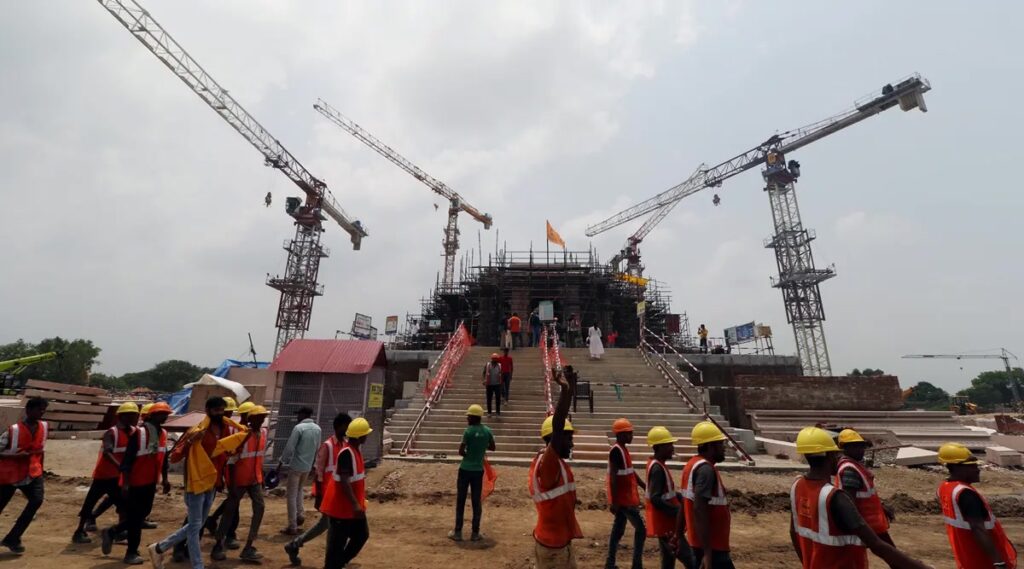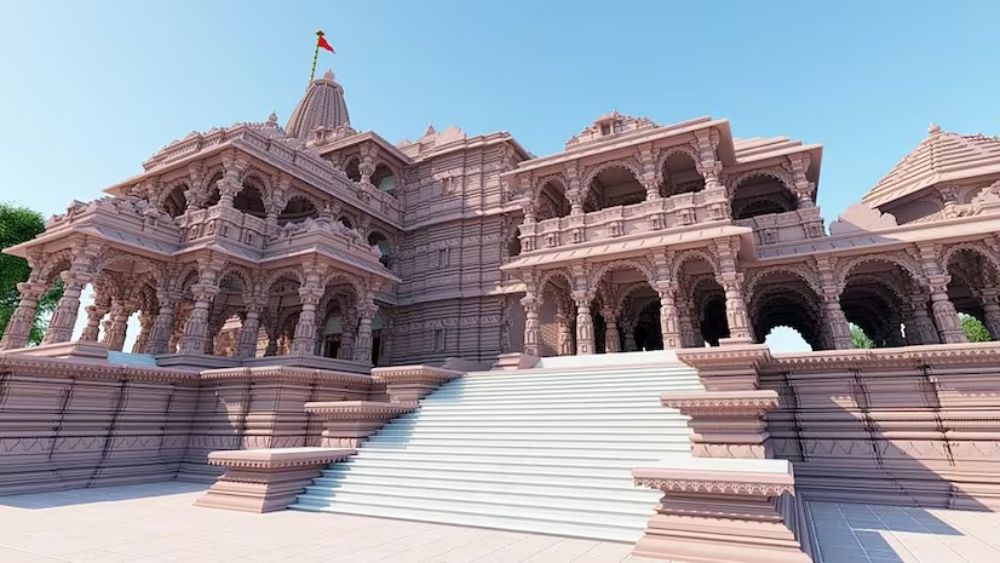Ayodhya’s Ram Temple, a symbol of religious significance, is not just a testament to faith but also an embodiment of innovative construction techniques. The temple’s construction, resilient in the face of seismic challenges, distinguishes itself by incorporating a unique blend of modern technologies and ancient construction wisdom, including the traditional Nagara Shaili.

Pink Sandstone from Rajasthan
The forefront of the temple, known as ‘Bhansipur,’ is constructed using special pink stones sourced from Rajasthan. The Makrana marbles in a white hue were imported to Rajasthan to contribute to the construction of the shrine’s front portion. The selection of these materials adds both aesthetic appeal and durability to the structure.
Tradition Meets Innovation
Contrary to popular belief that steel and cement were the primary construction materials, it’s fascinating to discover that Ayodhya’s Ram Temple didn’t utilise these. Chairman of the Shri Ram Janmabhoomi Teerth Kshetra Trust, Shri Nripendra Mishra, affirmed that the temple’s construction drew inspiration from traditional building methods. The use of iron and steel-like materials, akin to the Central Building Research Institute’s (CBRI) findings, dates back 80 to 90 years for similar structures.
Modern Techniques in Traditional Setting

The construction method adopted for the Ram Temple is a blend of traditional and contemporary techniques. The use of pink sandstone, devoid of any artificial bonding agents, is a nod to the ancient architectural practices. Dr. Pradeep Kumar Ramanchal, the Director of CBRI, emphasised that the temple’s construction adhered to centuries-old methods, with the project formally commencing in 2020.
Cutting-Edge Engineering for Seismic Resilience
The temple’s construction also prioritised earthquake resistance. With an impressive height of 57,000 square feet spread across 2.7 acres, it stands as a testament to the integration of modern technology. The selection of materials like granite and marble, with their superior structural qualities, demonstrates the meticulous planning to ensure the temple’s longevity.
Earthquake-Resistant Construction
In the face of seismic challenges, the temple’s construction involved meticulous planning. The engineering team used a mix of soil, sand, clay, and organic materials, specially engineered for a 15-metre depth. The metal-free concrete mixture, designed for earthquake resistance, was carefully chosen, and the construction process was overseen by experts in the field.

Ayodhya’s Ram Temple exemplifies a harmonious blend of tradition and innovation in its construction. From the choice of materials to earthquake-resistant engineering, the project has successfully merged ancient wisdom with cutting-edge technology. As it stands tall, the temple serves not only as a symbol of faith but also as a marvel of engineering, showcasing India’s rich heritage in construction techniques.
